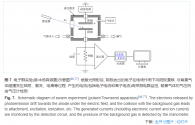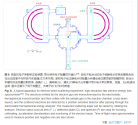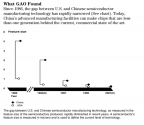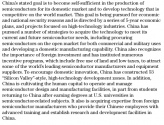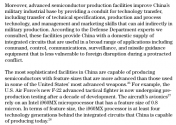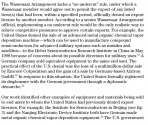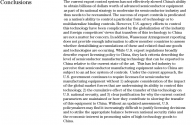As @tokenanalyst already explained, this is just some obscure stuff, not mainstream semi equipment or materials. Practical impact of this last stunt will be zero. Maybe Japan just feels obliged to show some courtesy to US that pushed hard in these last months to have Japan materials (especially advanced photo-resist) banned but, as of today, they just got a diplomatic middle-finger....of course anything can happen in the future...
China has succeeded already.
The virtual white flag of this tech war was raised by US in October 2023, when the new round of sanctions turned out to be a lame duck, a 200 pages of dull, bureaucratic blob. The only real thing has been forcing ASML to stop selling DUVi 28nm.
There have been no new ban extensions on US equipment (on 28nm and above), no new fronts (EDA, software, etc), no sanctions on Huawei suppliers. Mainly just raging out of frustration upon their so called "allies"....something that continues today, but the so called allies, Holland and Japan, have told US officials sent to push them: "We have suffered enough already. Let's wait until November elections, and then there will be plenty of time for new suffering in 2025".
Why TechInsights is mum about DRAM and NAND memory on the Pura 70? Why western mainstream is oddly quite mum too? They don't have the money to pay for TechInsights access? Last time it was Bloomberg that commissioned the work to TechInsights, and immediately came out with a full detailed report/article about the Mate 60, few days after phone was out.
They are mum because after they reveal that memory is Chinese (very probably, although no official confirmation yet)...they know they can only cope about it....so better to stay quiet and act like nothing happened.
China has succeeded already, the mountain pass has been crossed already, now is downhill from there...
...US is already setting up the new front line, the new trench line: exasperated protectionism, to the limit of plain import bans against Chinese chips and SME equipment, both in US and in their vassal states.
The amazing thing is that when the dust settles China may end up being the only country with a completely independent supply chain for advanced semi-conductor.

